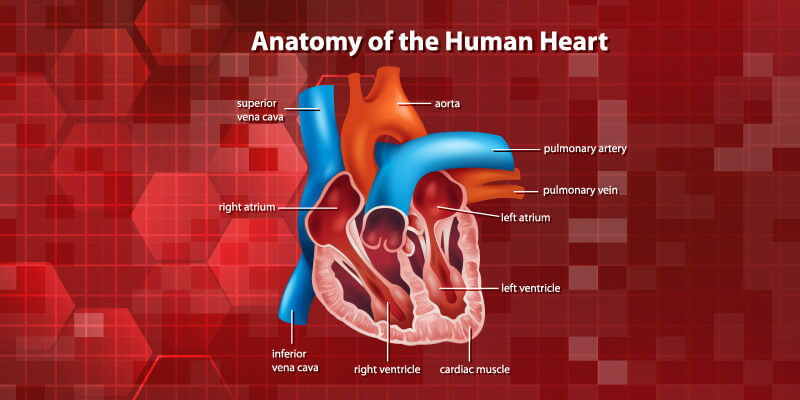Structural Heart Disease is an issue with the valves or tissues of the heart. It refers to non-coronary cardiovascular disorders, processes, and associated interventions. Some Structural Heart Diseases are congenital and some are developed later in life that compromise the function of the heart’s chambers or valves.
There are several types of Structural Heart Diseases and the point of commonality between them is that they all involve a disorder or defect in the structure of the heart valves or tissue.
Heart disorders that come in the category of Structural Heart Disease are:
- Aortic Valve Stenosis: In this disease, the aortic valve is narrowed.
- Patent Foramen Ovale (PFO) and Atrial Septal Defect (ASD): PFOs and ASDs are two different types of holes that occur in the upper chambers of the heart.
- Heart Valve Disease: This disorder occurs when one or more heart’s valves are damaged causing difficulties in the blood flow.
- Mitral Valve Regurgitation: In this disorder, the mitral valve allows the blood to leak backward in the heart.
- Left Ventricular Hypertrophy: In this, the muscle wall of the left ventricle is enlarged.
- Cardiomyopathy: This word describes the changes and variations in the heart muscle. Mostly, the muscle grows stiff and enlarged.
- Marfan Syndrome: This is a body’s connective tissue disorder. It can lead to an aneurysm to develop in the aorta or can cause issues with the mitral valve.
- Myocarditis: This causes the heart muscles to grow inflamed.
Some Common Facts about Structural Heart Disease

- Structural Heart Disease is an issue with the valves or tissues of the heart.
- Structural Heart Disease was first introduced in 1999 by Martin Leon at the Transcatheter Cardiovascular Therapeutics conference.
- It presents an overarching term including non-coronary cardiac disease methods and emerging interventional techniques.
- It is the most common congenital irregularity.
- Structural Heart Disease include patent foramen ovale, valvular disease, and paravalvular leak.
- According to a study by NCIB, in the United States, the impact of Structural Heart Disease is very severe. Approximately 1 in 10 people age 75 and above have severe or moderate mitral regurgitation.
- More than 1 in 8 people, in the US, age 75 and above have severe or moderate aortic stenosis.
- Approximately 1 in 6 million people are supposed to have tricuspid regurgitation, in the US.
- The number of patent foramen ovale (PFO) is as high as 27%.
Causes of Structural Heart Disease

Structural Heart Disease can be congenital defects, which means it is a defect present at birth or acquired later in life. People with this type of heart disorder have abnormalities that affect the heart’s chambers or valves, and sometimes both. Some of the causes of Structural Heart Disease are:
- Atherosclerosis: In this, the arteries supplying blood to the heart are clogged or narrowed which decreases the amount of oxygen the heart receives and impairs the muscle. This can also lead to a heart attack, leaving scar tissue on the heart. Scar tissues do not contract like normal heart tissues, causing the heart to pump less effectively.
- High Blood Pressure: High blood pressure raises the resistance that the heart needs to pump against which makes the heart work harder to pump blood in the body. With time, this can affect the heart and can lead to heart failure.
- Heart Valve Problems: Heart valves regulate the direction of blood flow from the heart. When damaged, they usually do not open and close correctly. This causes the backflow of blood or restricts the forward flow of blood. Congenital deformities and infections like rheumatic fever can lead to heart valve issues that prevent the heart’s capacity to pump blood efficiently.
- Alcohol Abuse: Excessive alcohol consumption can impair the muscle walls severely of the heart.
- Drug usage: Street drugs like amphetamines or cocaine can weaken the heart. Misuse of some medicines can also lead to heart failure.
- Cancer Treatments: In very rare cases, some cancer treatments can cause damage to the heart.
Symptoms of Structural Heart Disease
The symptoms and signs of Structural Heart Disease differ depending on the patient and the condition. Mostly, the symptoms include:
- Shortness of breath
- Stroke
- Chest pain
- Mini strokes, known as a transient ischemic attack
- A tight sensation in the chest
- Kidney dysfunction
- Coronary artery disease
- High blood pressure
- Fatigue
- Leg cramps
- Abnormal heartbeats
If a person suffers from heart failure, the symptoms and signs are due to lack of oxygen in the tissues or fluid buildup. The symptoms are:
- Cough
- Shortness of breath
- Excessive fatigue
- Swollen feet, ankles, lower back, belly, and fingers
- Weight gain
- Poor concentration and memory lapses
Diagnosis of Structural Heart Disease

If the person does not suffer from congenital Structural Heart Disease, then certain tests and physical examinations are conducted to diagnose the disease. These tests may include:
- Blood tests: It can evaluate a variety of health factors like the level of electrolytes and red blood cell count. Blood tests can monitor the functioning of the liver and kidneys. It can also identify the cause of heart problems.
- Urinalysis: Examining the sample of urine, helps in detecting problems, if any, with the kidneys or bladder that may contribute to heart problems.
- Electrocardiogram: It records the electrical activity of the heart. The procedure includes placing electrical wires on the chest, legs, and arms.
- Chest x-ray: This shows the size of the heart and also helps in determining the presence of fluid buildup in the lungs.
- Echocardiogram: It is the simplest way to evaluate the heart’s function. Ultrasound waves are used in this test to form an image of the movement and structure of the heart.
Conclusion
Structural Heart Disease is a non-coronary cardiovascular issue with the heart valves or tissues. It can be present at birth or develop later in life. Consult a doctor immediately if any of the signs and symptoms of Structural Heart Disease are visible.




